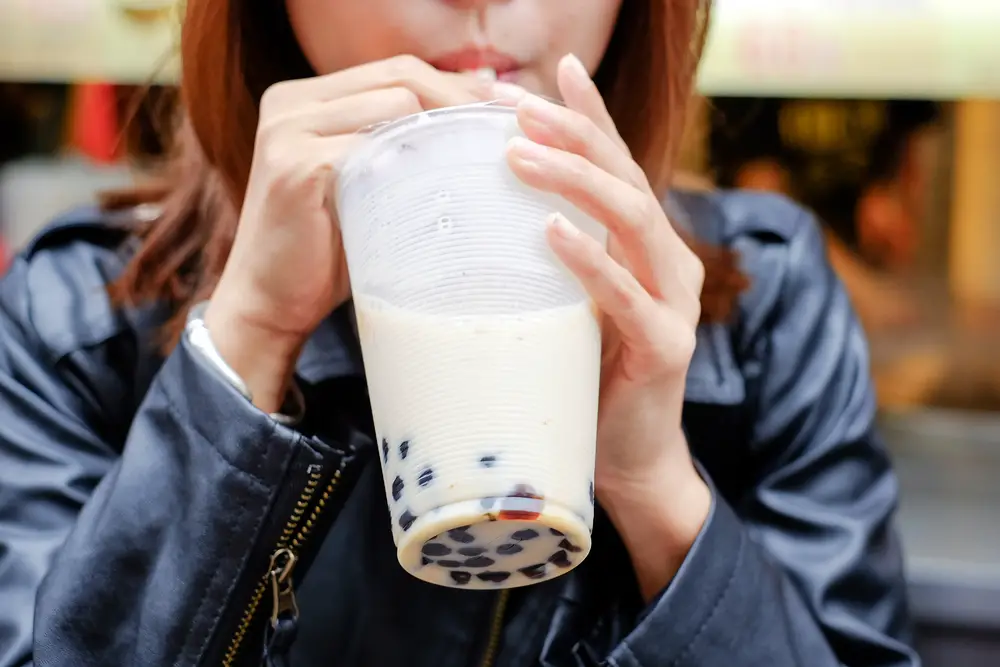Bubble tea, a delightful concoction of tea, milk, sugar, and chewy tapioca pearls, has become a worldwide phenomenon, savored by people from all walks of life. This refreshing beverage, known by several names, is most commonly referred to as “bubble tea” and “boba.” But why the term “boba”? Let’s delve into the origins and meaning behind this quirky name.
Origins of Bubble Tea
Bubble tea originated in Taiwan in the early 1980s. There are several claims to its invention, but the most popular narratives converge on tea shops in Taichung, Taiwan. As the story goes, it began as a simple experiment when tea shop owners started mixing fruit, syrup, or milk with tea and adding tapioca pearls, which were already popular in various Taiwanese desserts.
The Evolution of the Name
The original term “bubble tea” refers to the process of shaking the tea, which creates a frothy layer of bubbles on top of the beverage. However, the term “boba” is a bit more nuanced and culturally rooted.
“Boba” is actually a slang term that originated from the Chinese word “bōbà” (波霸), which translates to something akin to “big pearls.” In the 1980s, “bōbà” was also Taiwanese slang for “large-breasted woman,” used in a slightly playful and risqué manner. The tapioca pearls, when cooked, are large, round, and somewhat soft, resembling the slang’s playful reference to voluptuousness.
The Spread of Boba
As bubble tea became popular in other parts of the world, the term “boba” traveled with it, often used interchangeably with “bubble tea.” The word “boba” caught on particularly in the United States, where it became a catchy, easy-to-remember term. It resonated with the American audience, who found the name playful and unique, and it stuck more prominently than the more descriptive “bubble tea.”
Cultural Impact and Variations
Today, boba isn’t just a drink; it’s part of a broader cultural trend that includes boba cafes, boba snacks, and even boba-themed merchandise. The drink itself has also evolved, with variations that include different types of tea bases, a range of toppings beyond tapioca pearls (like jelly and pudding), and myriad flavors that cater to local tastes and dietary preferences.
The term “boba” is a testament to the playful and innovative spirit that bubble tea represents. It reflects not only the physical appearance of the drink but also the cultural context from which it originated. As bubble tea continues to spread globally, the name “boba” serves as a reminder of its humble, creative origins in Taiwan’s vibrant food scene. Whether you call it bubble tea, boba, or by any other name, this beverage remains a beloved treat that brings a little bit of joy and a lot of flavor to enthusiasts around the world.
Boba’s Global Journey
As boba tea has journeyed across the globe, its appeal has transcended cultures and borders, adapting to local tastes while maintaining its core identity. Each region has embraced boba with its own twist, further enriching the drink’s diversity and appeal.
Adaptation to Local Flavors
In the United States, boba tea often includes options like non-dairy milk to cater to vegan and lactose-intolerant consumers. Meanwhile, in Southeast Asia, variations include local ingredients like durian or lychee, offering flavors that resonate with regional palates. In Europe, cafes might pair boba with locally popular tea bases such as Earl Grey or even integrate it into cocktails for a more adult twist.
The Role of Social Media
Social media has played a crucial role in the spread and popularity of boba tea. Platforms like Instagram and TikTok have allowed users to share their colorful, often artistically presented boba drinks, sparking curiosity and interest worldwide. The visual appeal of boba tea, combined with the interactive experience of choosing from various toppings and customizing sweetness levels, makes it perfectly suited for the digital age where aesthetics and personalization are prized.
Health Trends and Innovations
Health-conscious trends have also influenced boba tea offerings. Many shops now provide options with lower sugar levels or alternative sweeteners like honey and agave. The introduction of healthier topping choices such as aloe vera, basil seeds, and fresh fruit aligns boba tea more closely with the wellness trends that appeal to modern consumers.
Challenges and Criticisms
Despite its popularity, boba tea is not without its challenges and criticisms. Concerns over its sugar content and the environmental impact of single-use plastics commonly used in boba shops have prompted calls for more sustainable practices. In response, some boba tea shops have started offering reusable cups and straws, and others have explored biodegradable options for packaging.
The Future of Boba
Looking ahead, the future of boba tea appears vibrant and filled with potential. Innovations in the industry, such as the expansion of flavor profiles and the integration of technology in ordering and customization, hint at a continued evolution tailored to an ever-growing fanbase.
Furthermore, the cultural significance of boba tea as a social beverage that fosters connection and enjoyment remains strong, ensuring its place in the global beverage market for years to come.
From its playful name to its status as a cultural icon, boba tea encapsulates a unique blend of tradition, innovation, and global appeal. Its story is one of cultural exchange and adaptation, reflecting broader trends in globalization and consumer behavior. Whether enjoyed in a bustling Taiwanese night market or a trendy New York City cafe, boba continues to delight and inspire, proving that sometimes, a simple drink can become a global sensation.


















